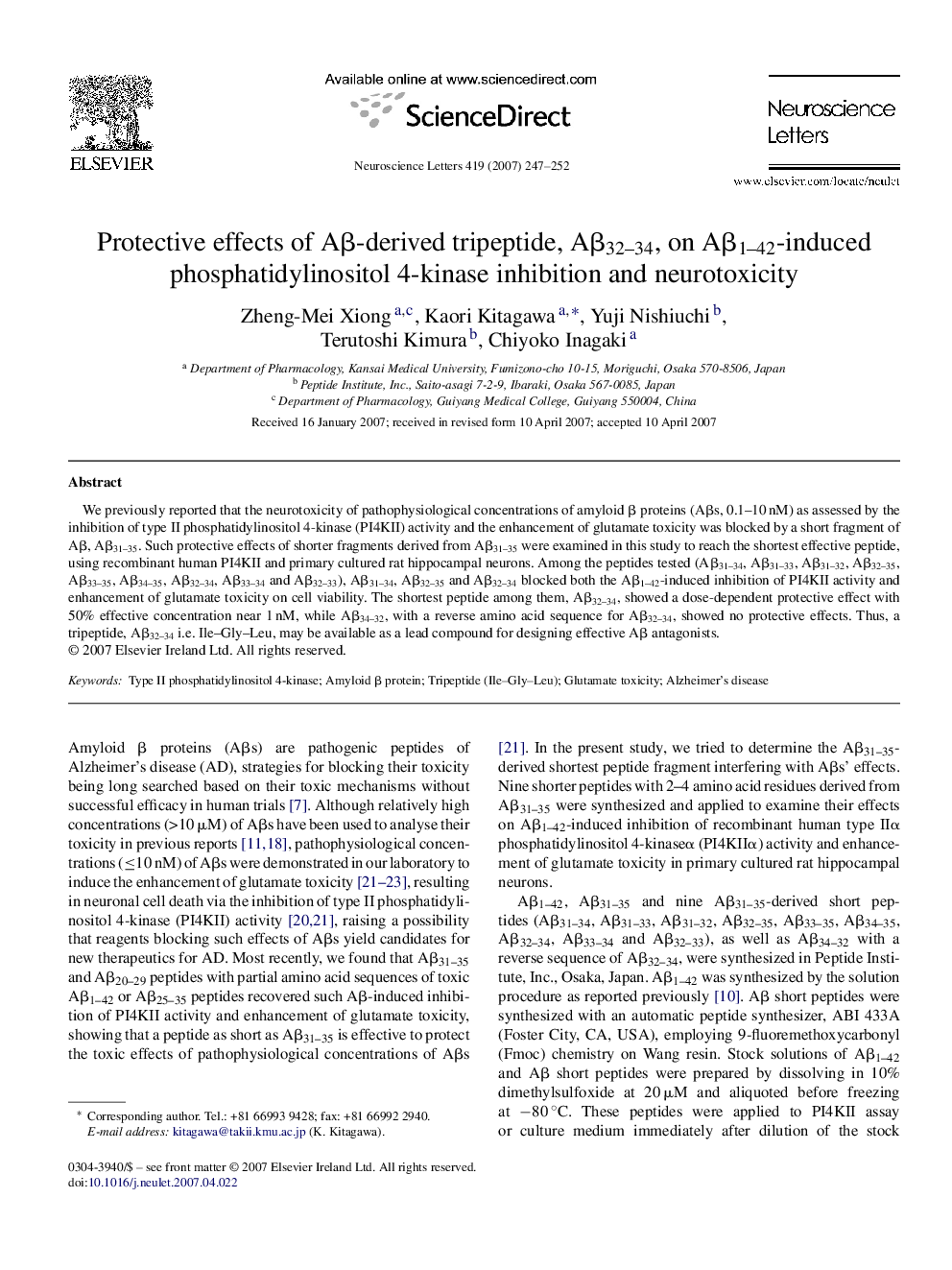| Article ID | Journal | Published Year | Pages | File Type |
|---|---|---|---|---|
| 4349619 | Neuroscience Letters | 2007 | 6 Pages |
We previously reported that the neurotoxicity of pathophysiological concentrations of amyloid β proteins (Aβs, 0.1–10 nM) as assessed by the inhibition of type II phosphatidylinositol 4-kinase (PI4KII) activity and the enhancement of glutamate toxicity was blocked by a short fragment of Aβ, Aβ31–35. Such protective effects of shorter fragments derived from Aβ31–35 were examined in this study to reach the shortest effective peptide, using recombinant human PI4KII and primary cultured rat hippocampal neurons. Among the peptides tested (Aβ31–34, Aβ31–33, Aβ31–32, Aβ32–35, Aβ33–35, Aβ34–35, Aβ32–34, Aβ33–34 and Aβ32–33), Aβ31–34, Aβ32–35 and Aβ32–34 blocked both the Aβ1–42-induced inhibition of PI4KII activity and enhancement of glutamate toxicity on cell viability. The shortest peptide among them, Aβ32–34, showed a dose-dependent protective effect with 50% effective concentration near 1 nM, while Aβ34–32, with a reverse amino acid sequence for Aβ32–34, showed no protective effects. Thus, a tripeptide, Aβ32–34 i.e. Ile–Gly–Leu, may be available as a lead compound for designing effective Aβ antagonists.
